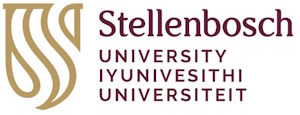
Article by Prof Kim Jenkins
After two months of decanting from the old Civil Engineering building to its reestablishment in the Pavement and Geotechnical Research Laboratory, the PGRL finally became operational in July 2020. Prof Kim Jenkins, incumbent of the SANRAL Chair in Pavement Engineering says: “The new PGRL that will support the SANRAL Chair, will provide a stimulus for fundamental and applicable research that stands to benefit our infrastructure in South Africa.
“In 2016, the South African National Roads Agency Ltd (SANRAL) provided an endowment of R30 million for the continuation of the Chair in Pavement Engineering, which was established in 2001. This large endowment equates to three-quarters of the PGRL cost. In combination with Stellenbosch University’s financing, SANRAL’s support will sustain the Chair for the next three decades.”
Since its inception the SANRAL Chair has delivered more than 100 postgraduate degrees in Pavement Engineering, including 7 PhDs. Prof Jenkins adds: “The rising student numbers in this field have led to a great need for a larger, more modern laboratory that can handle the volume and scope of the research in pavement and geotechnical engineering. The laboratory has separate facilities for research and practical sessions, making special provision of asphalt technology, bitumen rheology, cold recycling technology, geotechnical research and many innovative materials including those treated with nano-products.
“It would be remiss not to include a reminder of Prof Fred Hugo’s success in placing Pavement Engineering on the map at the Faculty several decades ago. Prof Hugo’s tireless contribution over decades is recognised in a plaque pertaining to the Accelerated Pavement Testing facility in the PGRL.
“It took a Herculean effort to move equipment from the old laboratory to the PGRL, ranging from enormous hydraulic actuators and their frames designed for triaxial testing, through to highly sensitive dynamic shear rheometers, into their new home. A range of specialists was required to establish and calibrate selected equipment. The new laboratory is purpose designed. It has spacious facilities; in fact, it is almost four times larger than the previous laboratory. The PGRL can accommodate up to 80 students in the soils laboratory and more than 60 delegates in the asphalt laboratory.”
Not only is the PGRL more conducive to delivering quality research, but it also provides safety in the workplace, unlike the previous cramped conditions. In addition, student practical sessions can now be divided into two groups and accommodated in the laboratory rather than the previous fragmentation into a dozen groups and replication of tests.
“The timing of commissioning the PGRL has conveniently minimised the impact on research activities that were already restrained by lockdown. Full-time postgraduate researchers have now returned to Stellenbosch University and are already commencing their research projects. Acknowledgements to the University for its support and sincere thanks to Dr Chantal Rudman and Rudi Scheepers in their extraordinary effort put into planning and implementation of the decanting, with the able assistance of the workshop and laboratory staff and assistants,” notes Prof Jenkins.
He concludes with this remark: “This new Pavement and Geotechnical Research Laboratory will lay the foundation for a younger generation to carry the baton forward with research in this important field, for many decades to come.”
Photographs from the left:
Left: Prof Kim Jenkins (holder of the SANRAL Chair in Pavement Engineering) left, with Dr Chantal Rudman and Rudi Scheepers in front of the large Triaxial Test apparatus.
Centre: The façade of the new, modern and spacious Pavement and Geotechnical Research Laboratory.
Right: The area where material and specimen preparations are done.



